
© Creative Commons User Jean-Marie Hullot licensed under CC BY 3.0
巴黎拉•维莱特公园如何开创城市设计的新纪元?
How the Parc de la Villette Kickstarted a New Era for Urban Design
由专筑网李韧,王帅编译
在你印象中,巴黎的公园是什么样子?答案也许是某种绘画形式,例如Georges Seurat的“ La Grande Jatte岛的周末午后”( A Sunday Afternoon on the Island of La Grande Jatte),化中,穿戴讲究的资产阶级在这座工业化城市的绿色小岛中享受着阳光。
What does the Parisian park look like? For many, the answer to that question comes in the form of a painting: Georges Seurat’s A Sunday Afternoon on the Island of La Grande Jatte, in which the well-dressed bourgeoisie leisurely enjoy a natural oasis on a verdant island within their industrializing city.
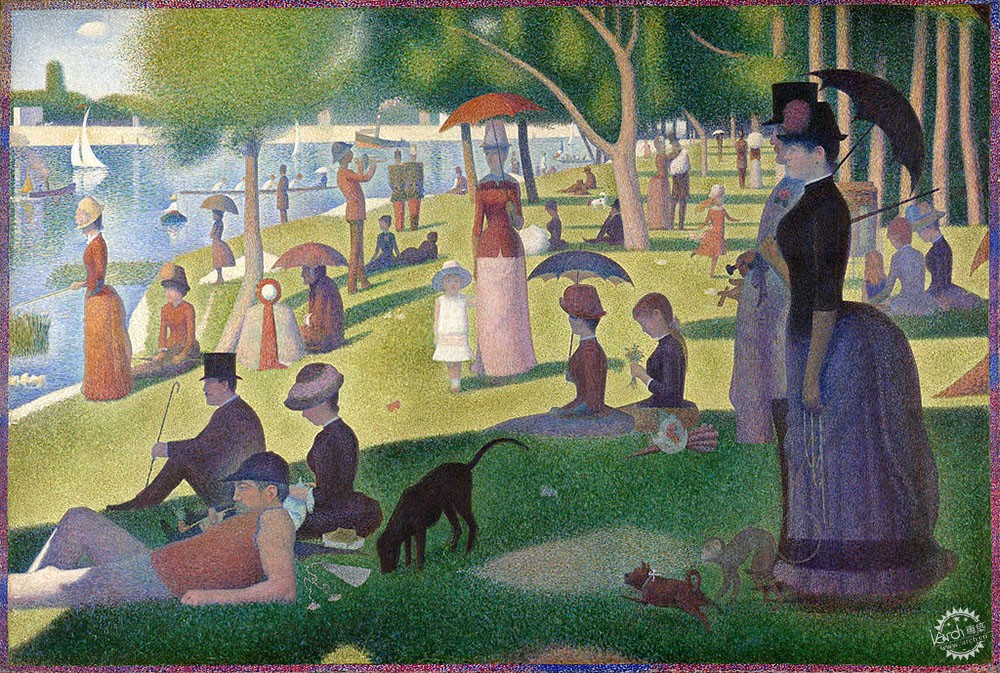
但是21世纪的巴黎公园又是什么样子呢?在由法国政府于1982年发起的设计竞赛中,伯纳德•屈米(Bernard Tschumi)设计的法国拉•维莱特公园很好地回答了这个问题,在这个项目中,超前的理念走在了当时城市公园的设计前沿。
But what does the twenty-first-century Parisian park look like? The answer to this more nuanced question, posed by the French government in a 1982 design competition, comes in the form of Bernard Tschumi’s Parc de la Villette, where a then-radical landscape set a precedent for urban parks in the decades to follow.
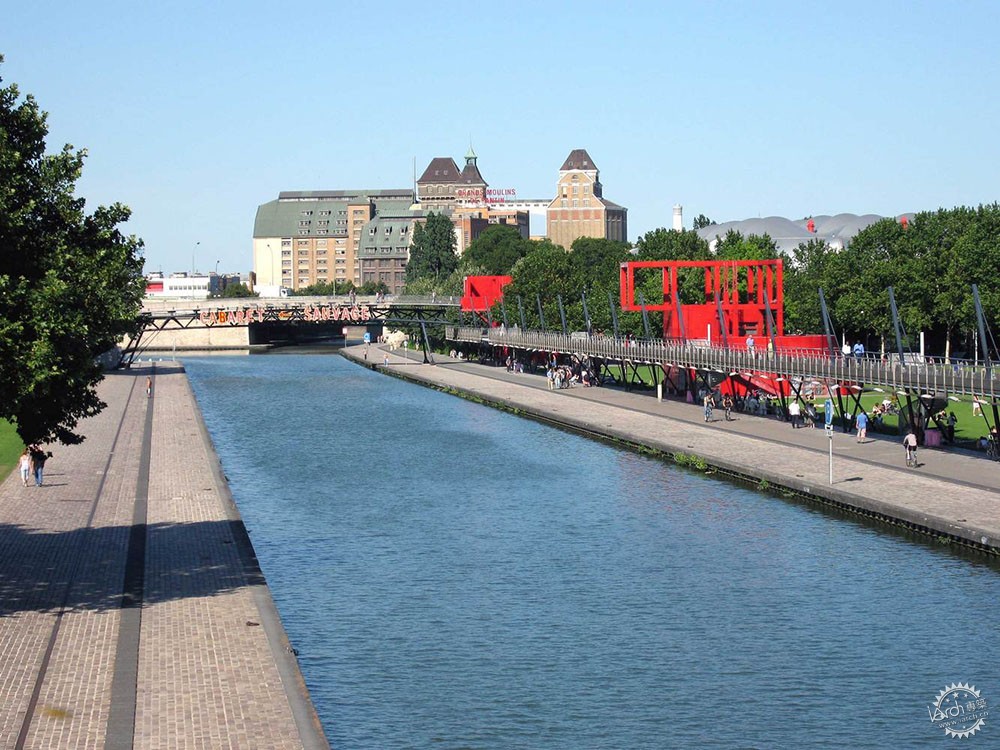
© Creative Commons User Pline licensed under CC BY-SA 3.0
巴黎拉•维莱特公园位于巴黎市东北部,该场地在19世纪曾经用作屠宰场,这座屠宰场建造于1867年,是巴黎Baron von Haussmann的更新改造项目,在1974年不再使用之后,这片场地得以保留重建。当时的法国总统François Mitterrand举办了一次方案征集竞赛,目的是将城市传统公共空间进行现代化改造,因此邀请诸如扎哈、库哈斯等国际知名建筑大师进行方案设计。本次竞赛的标题为“21世纪的城市公园”,希望该项目能够拥有全新的形式从而重新定义城市公园。
Today’s heavily-trafficked Parc de la Villette sits what was once an expansive nineteenth-century slaughterhouse in Northeast Paris. The slaughterhouse—built in 1867 as part of Baron von Haussmann’s renovation of Paris—closed in 1974, leaving a swath of land rife for redevelopment. Seeking innovative ways to reimagine the space, French president François Mitterrand sponsored a competition (as part of his “Grands Projects” initiative to modernize the country’s monuments and public spaces) that called for international entries, garnering responses from the likes of Zaha Hadid and Rem Koolhaas. The competition brief, entitled “Urban Park for the 21st Century,” set forth a program that extended, even in its name, far beyond Paris, seeking to broadly redefine the public park.

拉维莱特屠宰场/Abattoir (slaughterhouse) at La Villette
在本次竞赛中,伯纳德•屈米夺冠,这位建筑师以一种别致的方式来表达当代城市理念。就像纽约中央公园设计者、景观设计师Frederick Law Olmsted那样,屈米将公园视作城市空间的延续。具体来说,这位建筑师呼应了20世纪后期的城市发展特征,即城市范围愈发广阔,其特征性逐渐降低,甚至缺乏人情味,而这座公园则模仿了城市中的迷失感,场地的标识感不强,同时道路也并不规则,让人们身在其中有种迷失的感受。为了削弱公园的场所感,屈米刻意回避了场地的原有功能,这样一来,人们的行为则更加来自内心,而不是对诸如Seurat作品“ La Grande Jatte岛的周末午后”等某个历史场所或意义的潜意识表达。因此,屈米设计的巴黎拉•维莱特公园就如同一座真正意义的公共空间,就使用者而言,这并不是非常友好的空间场所。
The competition’s winner, Bernard Tschumi, used his design as a way to respond to the trials of the contemporary city. But where earlier landscape architects like Frederick Law Olmsted, who designed New York’s Central Park, conceived of the urban park as a place to escape from the city, Tschumi viewed the park as a continuation of the city. Specifically, the architect responded to a growing sense in the late 20th century that the city was too big, too anonymous, and too inhuman. The park, in turn, mimics the feeling of urban disorientation: signage is purposefully scarce and paths curve irregularly, leading visitors to nowhere in particular. And despite the site’s history, Tschumi purposefully avoids historical reference in an attempt to make the park a “non-place” where people will behave on their own terms, not in accordance with historical norms for park behavior (think: Seurat’s Sunday Afternoon). As such, critics of Tschumi’s Parc de la Villette—like the Project for Public Spaces, which listed the park as third on their list of the world’s worst parks—condemn it as non-user-friendly.
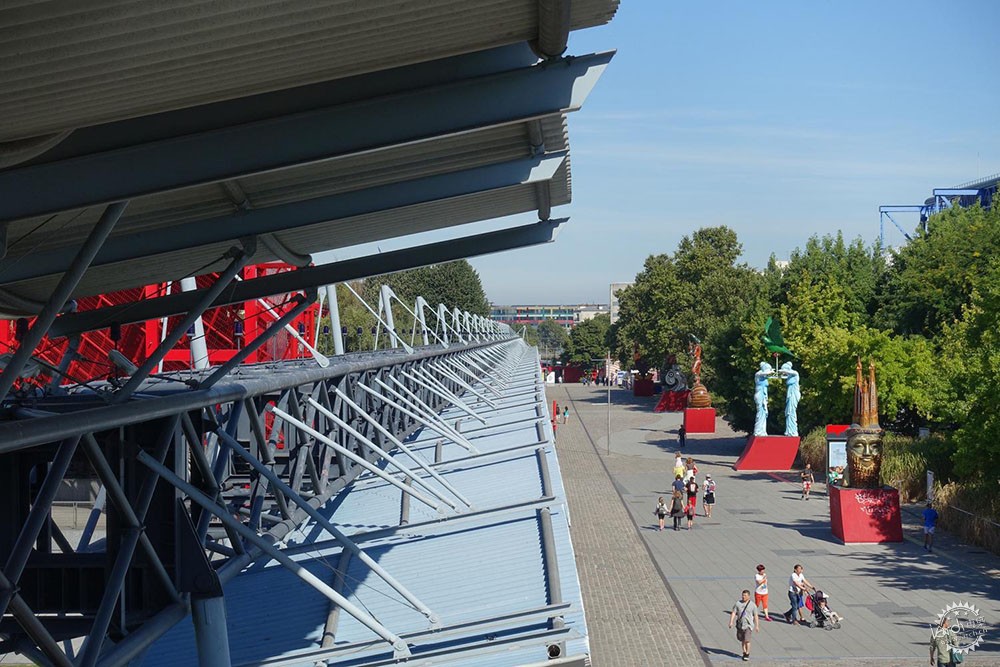
© Creative Commons User Guilhem Vellut licensed under CC BY 2.0
屈米的策略结合了点、线、面的网格体系,而这些理论概念则通过红色构筑物(点)、不规则的线性道路(线)、绿色景观区域(面)表达。这些名为“Folly”的结构非常有名,它们虽然没有实际的功能作用,但是却能表达英式花园的传统构件。这些红色的构筑物没有明确的功能,人们在穿过公园时会不经意地偶遇某个构件,从而成为这座大型城市公园的指向标。
Tschumi’s now well-known scheme for the park involved a grid upon which sat points, lines, and surfaces; these theoretical concepts translated respectively into red structures (points), nonsensically curving paths (lines), and landscaped green-space (surfaces). Most famous are the structures, which Tschumi referred to as “follies” in a nod to the non-functional but whimsical structures of the English garden tradition. Built as forms without clear functions, the all-red structures are evenly spaced through the park, becoming an orienting intervention in the large city park.
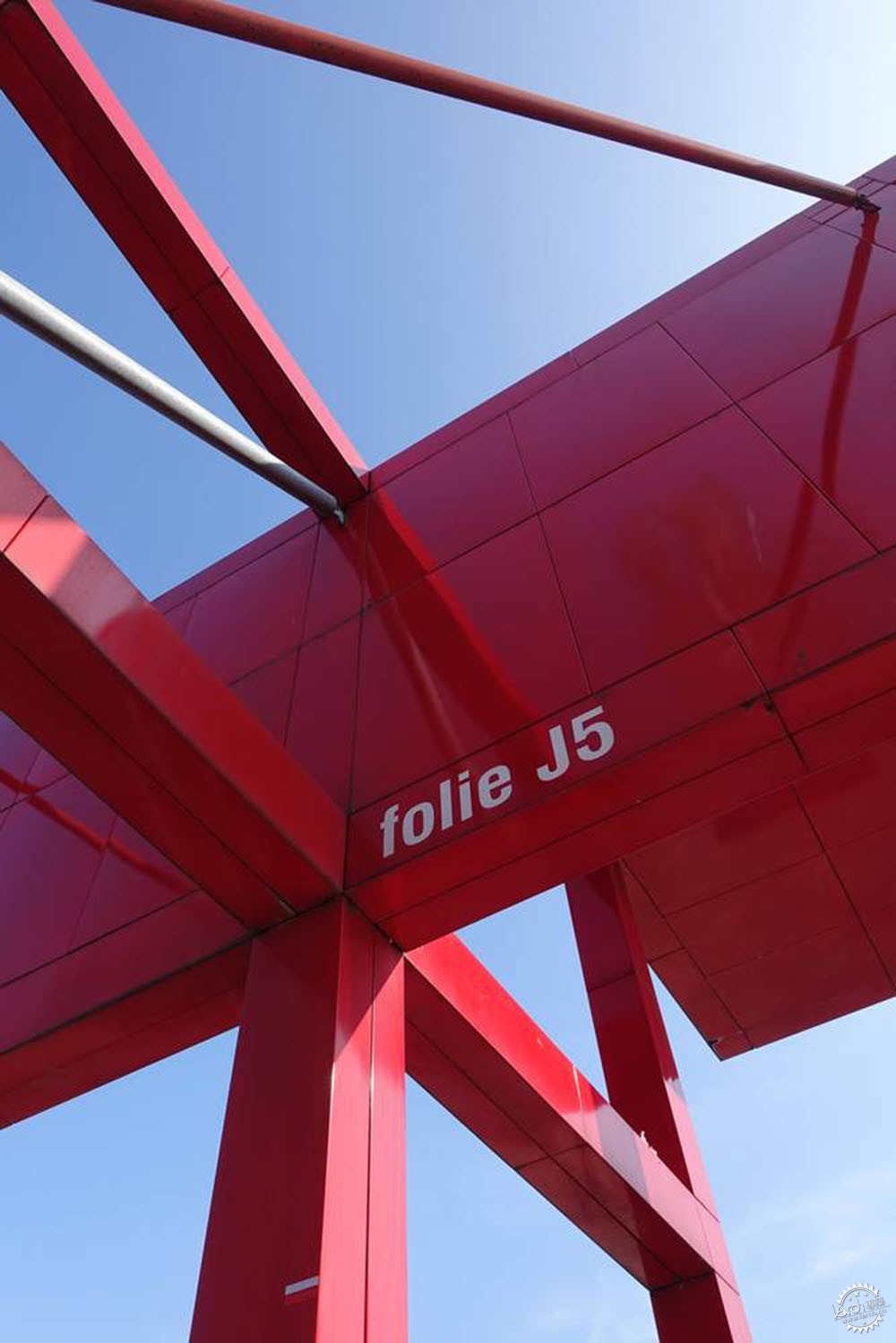
© Creative Commons User Guilhem Vellut licensed under CC BY 2.0
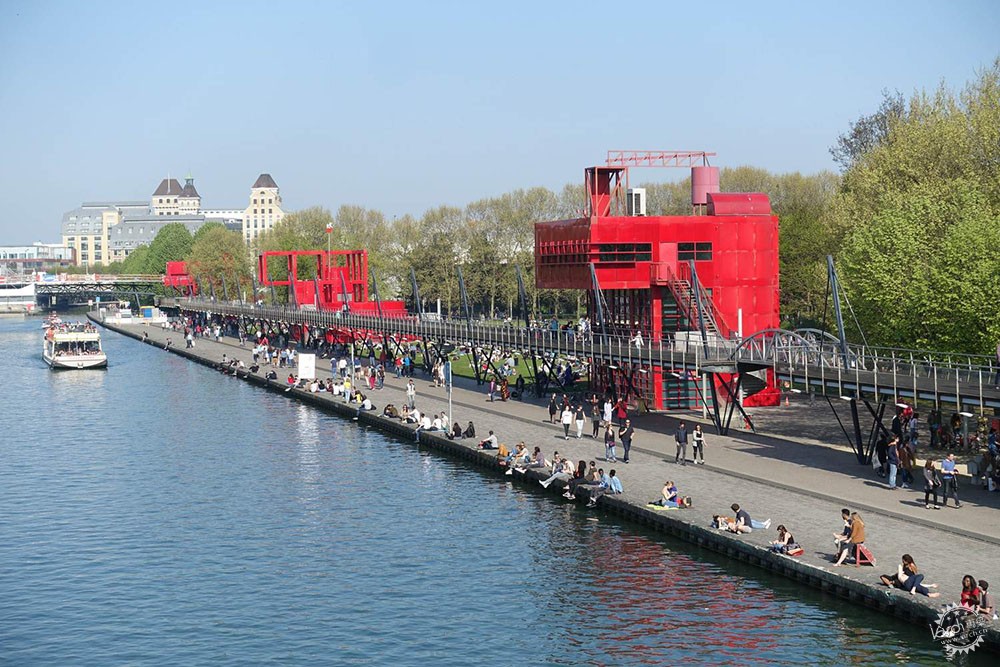
© Creative Commons User Guilhem Vellut licensed under CC BY 2.0
这些构件同样由屈米设计,其周边有文化中心、博物馆、音乐厅,以及由让•努维尔设计的巴黎爱乐音乐厅,不同的设施将市民引入公园,同时也成为了这座城市的进一步延续,而这也包含在屈米的设计理念之中。公园的活力和特征均来源于其整体构成逻辑。
The park’s structural features, designed by Tschumi, are paired with the cultural centers it houses, among them museums, concert halls, and Jean Nouvel’s Philharmonie de Paris. As institutions bring people into the park, it becomes even more so a continuation of the city—a fulfillment of Tschumi’s theoretical agenda. The park’s activity and vitality, then, derive in part from its peculiarity (what other park houses 35 contemporary follies?) and in part from its programming.
© Creative Commons User ParisSharing licensed under CC BY 2.0
那么再回到最初的问题,21世纪的巴黎公园是什么样子?对于屈米来说,也就是人们欣赏各个“Folly”、沿小道行走,而最终产生相互影响的场所。如果说,Seurat在19世纪的巴黎公园,漫无目的地在绿地中步行,那么现代人们在21世纪的公园便有着同样的目的,但是我们还有新一层目的,那便是社交互动。实际上,诸如在Knight和Kresge基金会的城市共享等项目中,人们会认为城市公园是重要的公共场所,在这里不受文化与地区的限制,同时鼓励人们的交流与相处,这便是能够代表巴黎的21世纪真正好公园。
What does the twenty-first-century Parisian park look like? To Bernard Tschumi, it’s a place where people play with follies, navigate winding paths, and, ultimately, interact with each other. If Seurat’s subjects came to the park in nineteenth-century Paris for the sake of relaxation—lounging carelessly on sloping greenery—we come to the park in the 21st century in part for the same reasons as Seraut’s subjects, but we also have a renewed purpose: social interaction. Indeed, a growing consensus, evident in myriad academic papers and work like the Knight and Kresge Foundations' Reimagining the Civic Commons project, sees the public park as a vital space for cross-cultural, inter-neighborhood contact in the increasingly digital and segregated city. Encouraged human interaction is, it seems, what makes a good park in the 21st century—even beyond Paris.
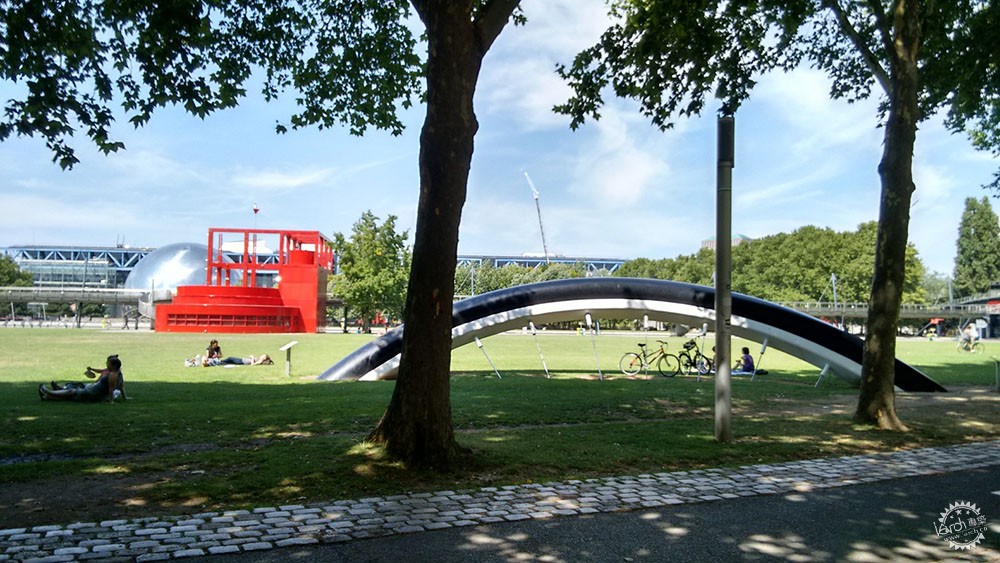
© Creative Commons User Alix Ferreira licensed under CC BY-SA 4.0
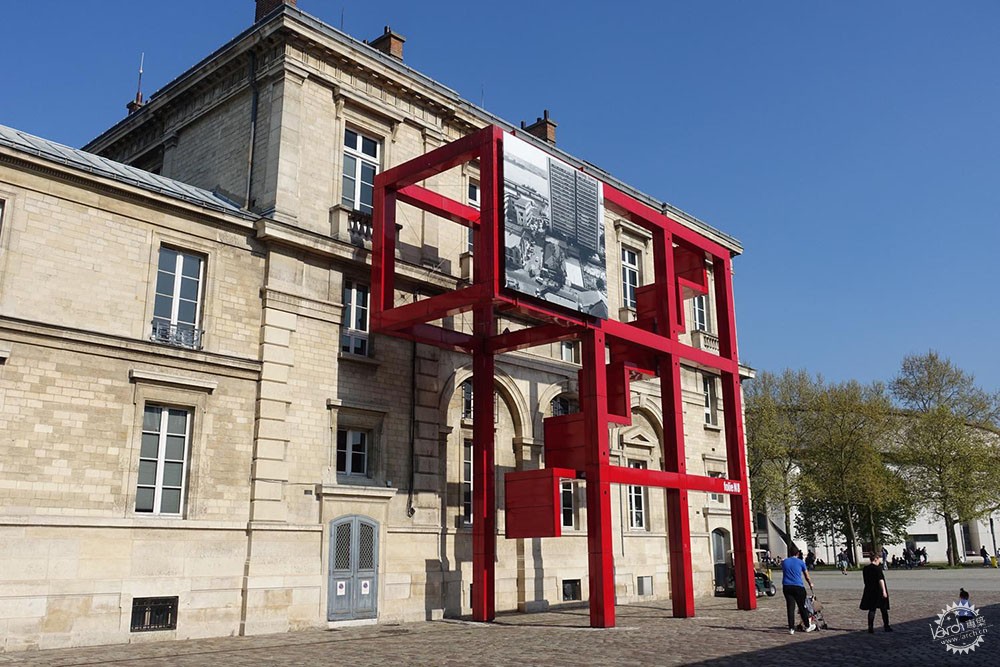
© Creative Commons User Guilhem Vellut licensed under CC BY 2.0
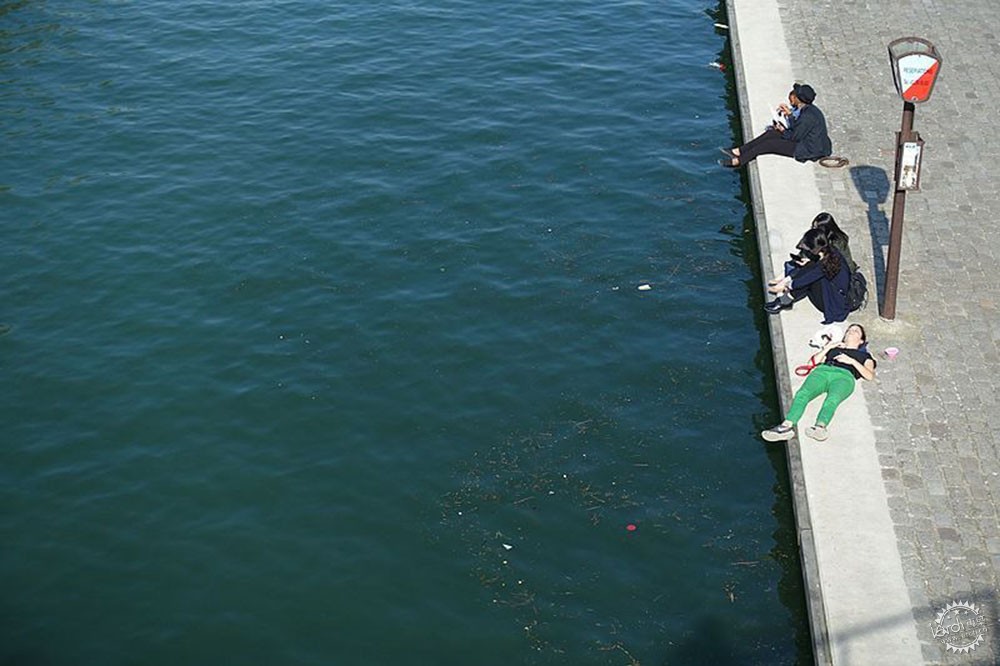
© Creative Commons User Guilhem Vellut licensed under CC BY 2.0
|
-
1.jpg
(240.72 KB, 下载次数: 1551)

|
